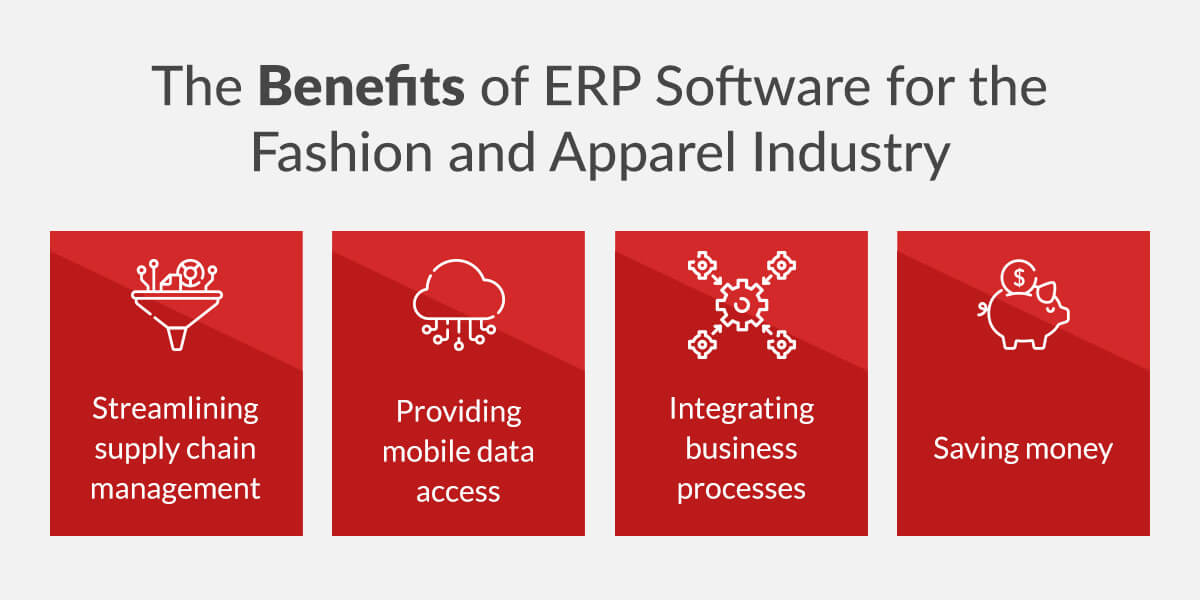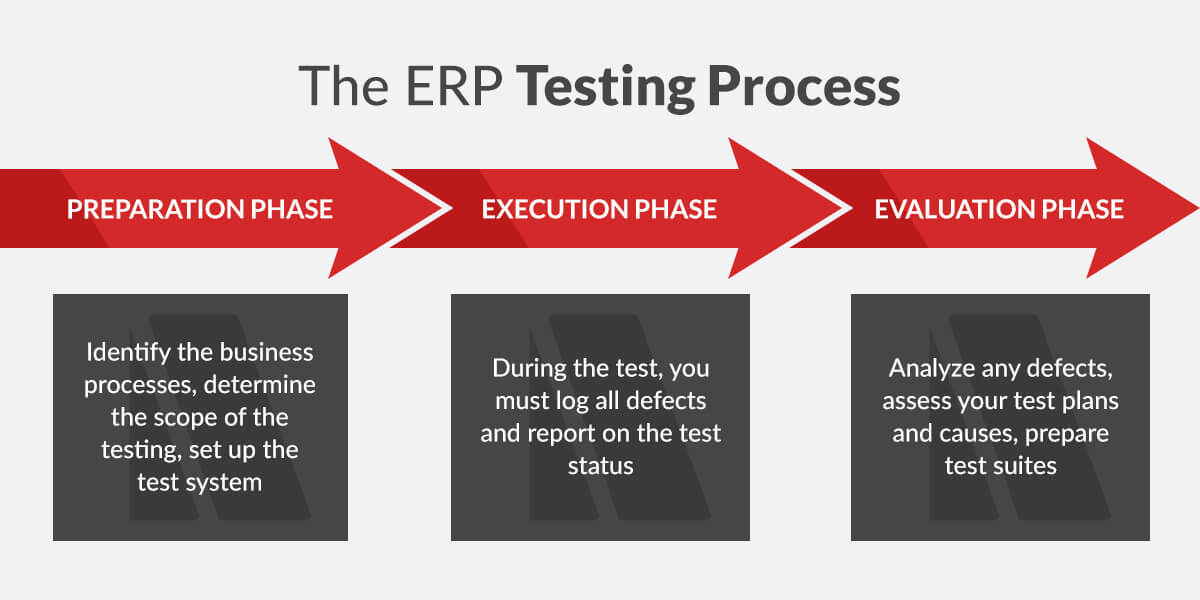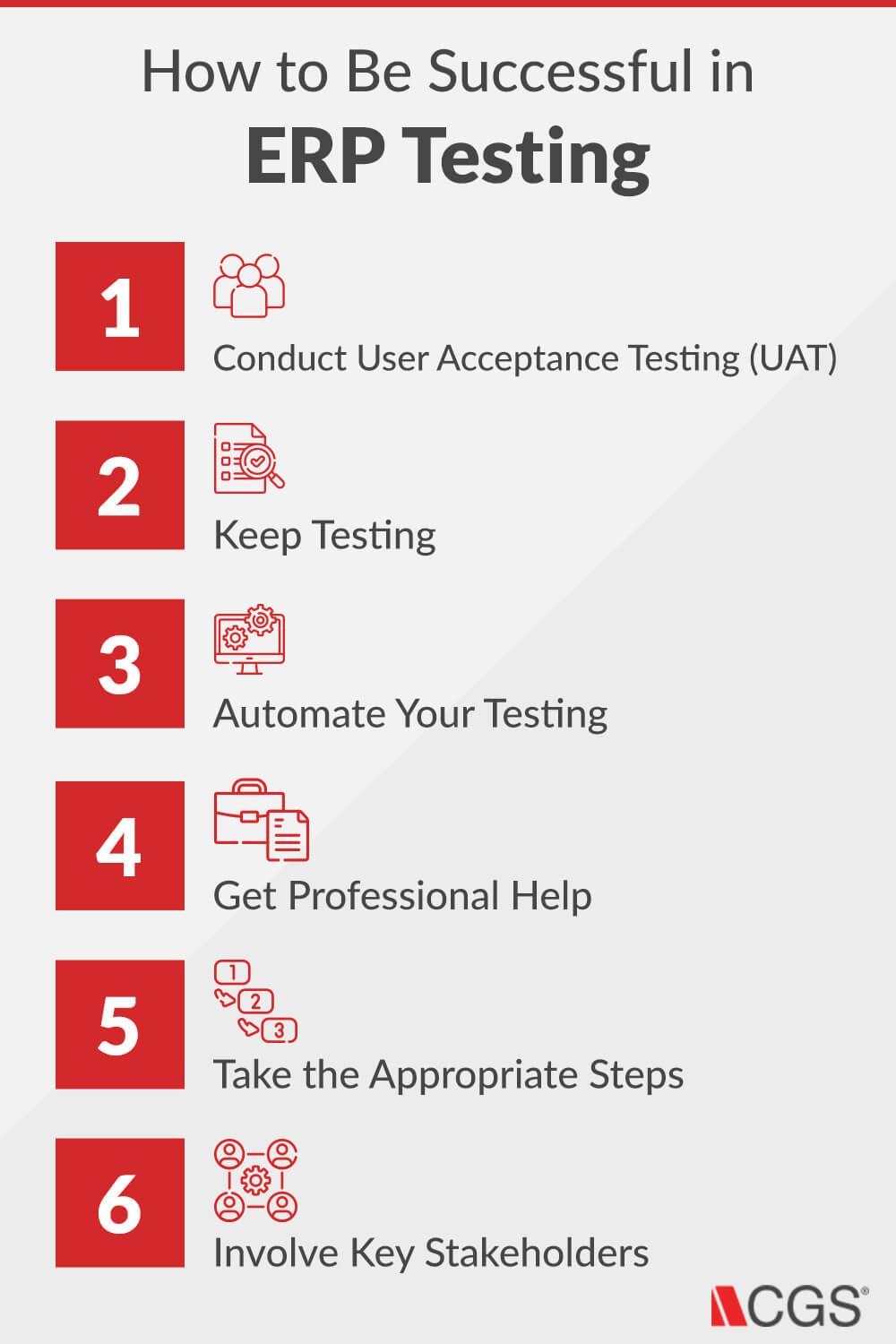
Daniella Ambrogi is Senior Global Marketing Director for CGS's Application Services division, which offers BlueCherry® software and services to 500+ fashion, footwear, consumer goods and retail companies worldwide. Ambrogi offers 20+ years of experience in the fashion and retail business; she understands a brand's complex needs in an ever-changing marketplace.
Topics
ERP Testing: What Is It and Why Is It Important in the Home Goods and Fashion Industry?

Many businesses in the fashion and apparel industry rely on enterprise resource planning (ERP) software to streamline their operational processes and manage supply chain initiatives. About half of ERP implementations fail the first time, which can impact efficiency, slow down your supply chain and be very costly. This is why ERP software testing is just as necessary as the software itself.
Fully functional ERP software has many benefits in the home goods, fashion and apparel industry. A sound ERP testing strategy can be the difference between overhauling your processes for the better and starting from scratch. ERP testing can help businesses maintain a competitive advantage in a rapidly evolving digital space by ensuring their ERP systems achieve the desired results.
What Is ERP?
Enterprise resource planning (ERP) is a software that many organizations use to manage day-to-day business processes such as procurement, project management and supply chain operations. Complete ERP suites include enterprise performance management software that helps plan, budget, predict and report for an organization.
ERP is critical for many businesses, as it integrates multiple business processes and enables data flow between each process. ERP software systems are indispensable in the home goods and fashion industry as they integrate planning, inventory purchase, sales, finance, marketing, and human resources.
For apparel and home goods manufacturers and retailers, ERP can streamline every manufacturing and supply chain function, help lower costs, and improve employee and customer satisfaction. ERP helps with every process stage, from eliminating data duplication to providing data integrity and streamlining resource planning initiatives.
What Is ERP Used For?
ERP has multiple uses across many industries. In the fashion and apparel industry, the software helps streamline processes in the following ways:
- Elevating efficiency: ERP can navigate complex processes and prevent data redundancies, which enables automation and improves critical functions such as order fulfillment.
- Improving productivity: ERP software gives you a complete view of your business and access to all processes and data in real time, which allows management to make timely and precise decisions to boost productivity.
- Increasing profitability: Accurate inventory tracking is critical in the fashion industry. ERP helps with precise inventory tracking and predictions, tightening your supply chain and scheduling deliveries.
The Benefits of ERP Software for the Home Goods, Fashion and Apparel Industry
ERP software has many applications spanning multiple industries. It helps streamline operations and automate processes for greater efficiency in areas like finance, procurement, and supply chain management. Some of the many benefits of ERP in the fashion industry include the following:
- Streamlining supply chain management: ERP software helps track and effectively manage supply chains, and automation can improve organizational collaboration, production and distribution. ERP also can predict market requirements based on collected data, which can help apparel businesses prepare and stay ahead of orders and shipments.
- Providing mobile data access: Cloud-based ERP systems allow you to manage your data from anywhere and provide controlled access to your team members. The combination of data safety and disseminating relevant information to employees is invaluable.
- Integrating business processes: ERP can integrate all aspects of apparel business processes and critical members of your team, resulting in a more productive and efficient workflow.
- Saving money: Enhancing the process flow reduces labor expenses and manages allocated tasks and shifts. Boosting the workflow results in more efficient and productive employees, which provides a good return on investment (ROI) in integrating the software.

What Is ERP Testing?
As the name suggests, an ERP test is the process of testing the functionality of your ERP software during implementation. Testing is a quality assurance procedure to establish whether your ERP software and systems are properly integrated and fully operational before launching.
Most businesses must configure their ERP systems to their unique needs and industry. ERP testing ensures the full functioning and configuration of each module of your software, ensuring your implementation proceeds as planned and setting your business up to reap the benefits of streamlining processes in the long term.
Your ERP software plays a critical role in the daily running of your business, so testing your implementation process is vital to ensure it performs and to draw your attention to any opportunities for improvement within your systems. You can carry out ERP testing manually or automate it.
ERP testing users need to know how the data moves around the system and where data is saved in various subsystems. Your ERP system will become more valuable when it’s tested to expose weaknesses. The testing data you collect will be invaluable in customizing your ERP software to suit your unique business needs.
The ERP Testing Process
Depending on your testing objectives, the ERP testing process can be complex or straightforward. ERP testing focuses on each module and its functionality under different circumstances and scenarios. There are three key phases in the ERP testing process, including the following:
1. The Preparation Phase
Before ERP testing begins, testing experts must identify the business processes, determine the scope of the testing, set up the test system, prepare the test suite, and create testing data. In this phase, you must consider the risks concerning your ERP testing, formulate a plan to mitigate these risks, estimate the number of test cases per iteration, and reject defects and needs that don't fit into test cases.
2. The Execution Phase
As the name suggests, you will execute the ERP test in this phase. During the test, you must log all defects and report on the test status.
3. The Evaluation Phase
Once you have gathered the data from the execution phase, you must analyze any defects, assess your test plans and causes, prepare test suites, and document the overall testing process.

Why Is ERP Testing Important in Home Goods and Fashion?
The home goods, fashion and apparel industry relies on streamlining every aspect of its processes to meet changing customer demands and supply chain complexities. With these market and operational challenges, home goods and apparel companies must improve their strategic decision-making and streamline product delivery through all sales channels.
ERP systems are versatile and adaptable, and home goods and apparel companies can customize their systems to meet market needs. As a result, ERP testing is critical to set up these complex systems to perform to the company's exact specifications.
The Benefits of ERP Testing Automation
Automated ERP testing can be straightforward with the right partners and testing tools. Automated testing boosts the efficiency of the testing process by leveraging your current automation frameworks, which are already customized and unique to your business. As test requirements change frequently, more companies are conducting automated ERP testing to provide more consistent feedback on their systems. Some of the benefits of automated ERP testing include the following:
- Reducing testing times: The testing environment in the fashion and apparel industry is complex and multifaceted. Automated testing reduces the testing times for many business processes.
- Allowing continuous system monitoring: With constant monitoring, you can find and fix bugs in real time, avoiding downtime and the associated losses.
- Overcoming manual testing challenges: Many challenges are associated with manual testing, including human error and time-consuming processes. Automated testing provides accurate and quality solutions much faster.
- Focusing on set business requirements: Automated testing ensures that the primary focus of ERP upgrades and systems is to reach predefined business objectives and needs.
Common Challenges Associated With ERP
An ERP testing strategy is essential to avoid unexpected budget overruns. Without one, several challenges in the testing process could cost your business significantly more than you anticipated. As many as 45% of businesses have a budget overrun of up to 30% due to specific — and sometimes avoidable — testing challenges, including the following:
- Testing scope: Testing too much wastes time and resources and testing too little increases the risk to your business.
- Test coverage: ERP migration projects have many complex moving parts. Testing must cover added and updated attributes and pass various stages to be helpful to an apparel company.
- Change frequency: Change management in an ERP project scope can be frustrating and time-consuming. The frequency of the changes results in more testing requirements.
- Test fatigue: ERP migration projects can be extensive. Manual testing can be inefficient and prone to error.
- Test teams: Identifying the right professionals to manage and perform your ERP testing can be challenging. They need to understand whether your ERP software meets your industry and unique expectation.
- Tracking results: An ERP system needs to provide a tool to assist in tracking and managing results, which can be challenging. Test reporting should allow for more than monitoring pass and fail rates. It should categorize the seriousness of the issues and enable multiple users to access the results simultaneously.
How to Be Successful in ERP Testing
With some simple tips, you can increase the efficacy of ERP testing throughout your organization. Ensure you have a sound understanding of the inter-relationships between subsystems and modules and keep the following in mind for a successful implementation:

1. Conduct User Acceptance Testing (UAT)
Although you can conduct complex and comprehensive tests to ensure the code performs as it should, your ERP software must also be user-friendly. Incorporating real-world users in testing is critical to discover how the software interacts with other modules and finding usage issues. Users can also suggest modifications that make using the software quicker and easier for your business requirements.
2. Keep Testing
ERP modules often get increasingly more complex as data points converge. For your ERP to perform at optimum levels, there are always tests you can try.
3. Automate Your Testing
Manual ERP testing is often unmanageable and error prone. Automation lets you test functionality and validate data points once each module has been released. It frees your team up to conduct meaningful work, provides more accurate results, and allows for faster turnaround times throughout your supply chain and internal processes.
4. Get Professional Help
With professionals involved, you can monitor project implementation and enhancements more accurately. You'll have a comprehensive set of tools at your fingertips to power fashion and apparel business processes and manage critical business transactions.
5. Take the Appropriate Steps
ERP testing is a process, and taking shortcuts will only impact your ability to get the best results in the long term. Take it one step at a time and stick with the right processes and standards for the best possible results.
6. Involve Key Stakeholders
The transition from a more traditional business model to an ERP system can result in suspicion and nervousness from team members. Including critical stakeholders in the design, build and testing processes provides you with valuable feedback and lessens concerns throughout our organization. Your ERP testing solution should include easy onboarding and monitoring to have as many stakeholders as possible.
Meet Your ERP Requirements
ERP testing is critical to ensure the functionality of your ERP solution. To ensure your ERP solution and the accompanying testing provide your business with the operational efficiency and automation you need, you need a dedicated ERP solution for the home goods, fashion, apparel and footwear industry.
CGS BlueCherry® is a leading global supplier of a full range of integrated technologies that gives you complete control of your processes from start to finish. We pride ourselves in our ability to advise and support fashion and apparel companies in achieving the efficiency and productivity they need to provide customer satisfaction in a rapidly changing market.
If you would like to learn more about how CGS can help you streamline your processes and provide unique and valuable software solutions, please reach out to us today. We'll walk you through how you can connect the supply chain dots and take your ERP to the next level.

Daniella Ambrogi is Senior Global Marketing Director for CGS's Application Services division, which offers BlueCherry® software and services to 500+ fashion, footwear, consumer goods and retail companies worldwide. Ambrogi offers 20+ years of experience in the fashion and retail business; she understands a brand's complex needs in an ever-changing marketplace.


